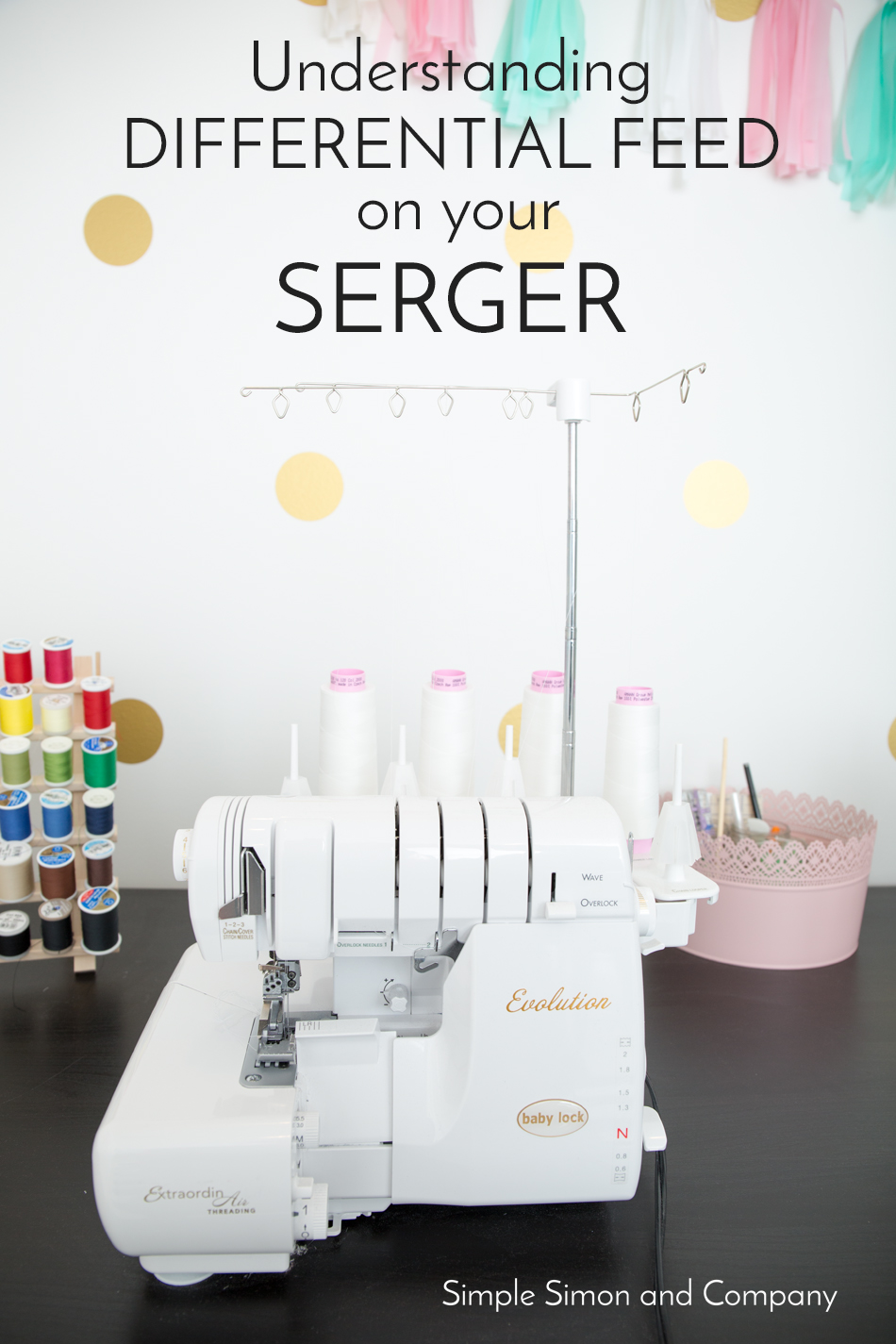Light weight fabric tends to slip and pull and pucker. However, if you turn the dial down and the back feed dogs are pulling faster than the front feed dogs that will help to keep your fabric taut as it moves underneath the needle and will prevent any unwanted puckers.
*Is there anything else I should know?
Yes. But this is enough information to get you started. And just remember: You will need a little practice. Everyone does. But with that practice will come an understanding of how the fabric is moved through your machine and then you will be able to master any type of material you want to work with and have your project turn out fabulous! You can do it!
***********
Hopefully that was informative and not to painful!
Just understanding what differential feed is and how to control it has already made a huge difference in the quality of my serged garments. (And has lessened my anxiety about serging…everything in sight….)
-liZ







I’m thinking about a asking for a serger for my birthday. So it’s really good to gather some information about it beforehand. Thanks a lot!
Wow. That’s awesome. No-one ever explained it to me like that before and now it makes SO MUCH SENSE. YAY! My overlocking is going to be WAY better from now on.
Thank you so much! I’ve been trying to figure out why my knits stretch when many bloggers post serging is so easy with knits. I just looked in my manual and sure enough it said to change the differential feed to 1.5 – but now I understand why. Great – I just added 3 knit projects to my to do list!
Thank you thank you thank you!! I have had my serger for over 10 years and never truly understood what differential feed is! I’ve got a Craft Gossip post scheduled for tomorrow that links to your tutorial:
http://sewing.craftgossip.com/tutorial-serger-differential-feed-what-it-is-and-when-to-adjust/2014/06/30/
–Anne
Thank you! That was a beautiful explanation.
I got a serger this past Christmas…and I’ve only tried it once. It scares the heck out of me! I would love to learn more about it…thinking of taking a craftsy class to get more comfortable with using it. When I opened it I was so excited and thought I would jump right in…well going thru the instruction book put the brakes on that! Thanks for the info. Maybe now I will summon some courage and attack learning more about it again.
Dh surprised me with a BL serger two Christmases ago and I LOVE it.
I use it to gather a lot and love it but didn’t know the mechanics behind it!
Thank you!
Thank you for that great explanation. I always wondered why my napkins would be stretched out on the crosswise grain when I did a rolled hem. Now I know that I need to change the differential for the crosswise hem!!! Live and learn.
Very many thanks. This tutorial is brilliant.
This is super helpful! Thank you! My wonderful husband bought me a serger for Christmas and I LOVE it, but I had no idea of what the differential feeds did. This will make sewing easier 🙂
I was told by a sewing instructor to increase the diff. feed to about 2.5 to sewing a sweat shirt but found that the entire thing produced lettuce edge and I had to redo everything. I decreased the diff. feed down to .5 and go beautiful edging. Still something to learn.
Thank you so much. I soooo needed this information.
Can I print this blog to keep with my serger?
thanks!
I’m trying to repair some potty pads for my sister’s dogs. They are thick and I’m having trouble getting the top layer to go thru at the same time as the bottom layer. Do you have tips for the best position for the feed dogs in this situation?
Have you tried a walking foot? It should help your problem!